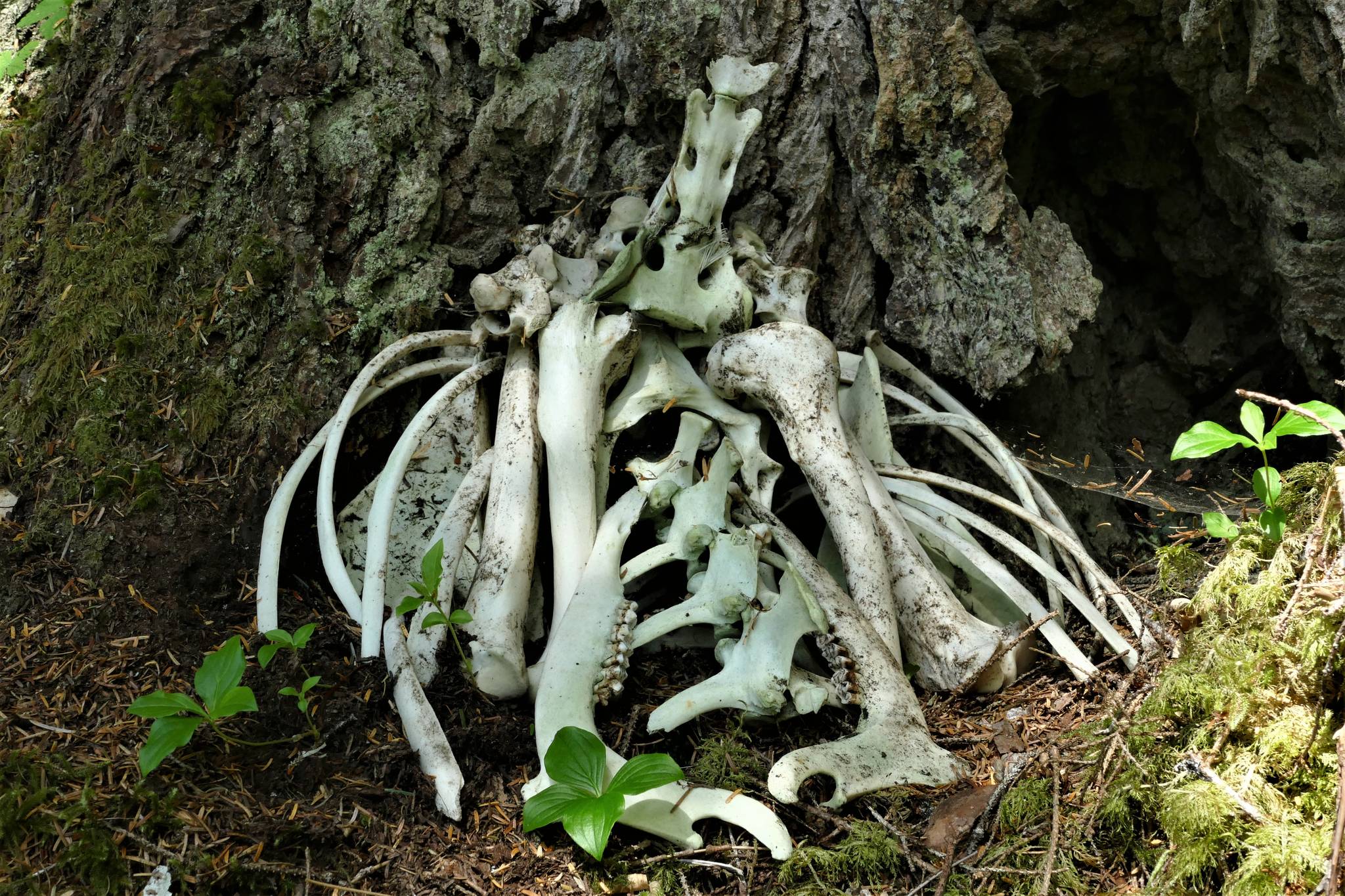A stiff southeasterly set the dark, wet woods of Douglas Island whispering.
My dog Fen trotted ahead as we walked to the base of a mountain. My pack was filled with scraps of a deer I’d killed the previous evening — fat and blood-shot meat and testicles.
The last part of every hunt involves returning parts of the animal I don’t use to the woods.
A day before I’d shot the deer, a tourist had asked me if I was hunter. I nodded and, to be polite, asked the man if he was too. He told me he was an animal lover, that hunting was barbaric and using a rifle was cheating. He compared hunting deer to shooting cows. I shrugged and mumbled something about loving animals too.
That day with Fen, I walked off the main trail and into a series of meadows. Rain clouds shrouded all but the lower ramparts of the mountain. It had been such a dry summer that I was happy for the deluge. Salmon were finally able to move upstream and give their spawn and flesh back to the woods. I could smell the deer I’d killed. My hands, even after several washings, would smell like its flesh for at least the day to come.
I’d waited 20 minutes for a clean broadside shot on the deer. A good kill, proper field dressing and care means all the difference between gamey and delicious eats. At dusk I’d hoisted two bags of meat — one for the heart and quarter, with evidence of sex attached, and the other with the rest of the meat — over a branch so that it would be well out of the reach of bears.
That night I lay in my tent reading Nick Jan’s book “The Grizzly Maze.” It’s about Timothy Treadwell and his friend Annie Huguenard getting eaten by a bear out on the Alaska Peninsula. It’s a really good book but a poor choice of reading material considering I was on Admiralty Island. When I got to the gory details I had to put it down. I’d seen one bear on the hike up to the alpine — I’d roused it from its bed at 40 yards. It walked off without ever looking at me. I know of no creature more impressive than a big brown bear, especially when encountered in old-growth forest.
I lay awake late into the night listening to the wind and thinking about being meat. I hope that when I die, something will eat me and my remains will be left deep in the woods. I wondered if I should write it in a will.
In the morning I hauled the deer off the mountain and, after getting home, began processing. There’s a sort of meditative quality to butchering. Separate steaks and roast, then cut sinew, fat and gristle from each piece. After wrapping each chunk in butcher paper and labeling date and year, I go through scraps and lower quality chunks that will be grinded into burger. I’m less discriminatory with burger, but I still make sure there’s nothing blood-shot or any sizable chunks of fat attached.
Fen ran circles around me as I walked across a muskeg. I pushed through berry bushes to a fringe of conifers. I picked a twisted hemlock to leave the deer remains at the base of. I inadvertently put a foot through a hole surrounded by roots. It seemed like a good of place as any, so I dumped the scraps in. I said my last apology and thanks and began the trek back to the road.
At home I sliced the deer’s heart in thin strips and brushed them with sesame oil, turmeric and salty seasoning. Then I sat down to dinner as a mega cruise ship motored down Gastineau Channel and waterfalls cascaded down the gray mountainside.
• Bjorn Dihle is a Juneau writer and is the author of “Haunted Inside Passage: Ghosts, Legends and Mysteries of Southeast Alaska” and “Never Cry Halibut: and Other Alaska Fishing and Hunting Tales.” You can contact or follow him at facebook.com/BjornDihleauthor. “Off the Beaten Path” appears in Outdoors every other Friday.

